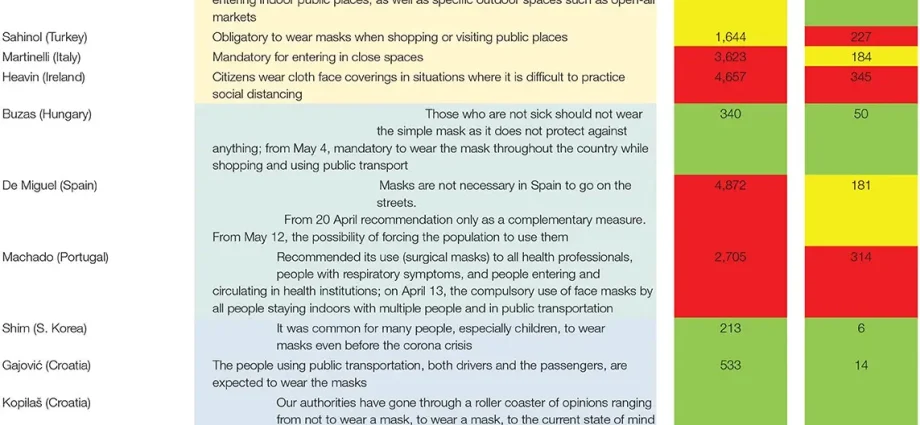Contents
During Monday’s meeting with media representatives, WHO emphasized its current position regarding protective masks in the face of the coronavirus. In most cases, wearing them is not recommended for healthy people, unless they are caring for someone with COVID-19. There is no indication for the wearing of masks by the majority of the population.
Who should wear protective masks?
Due to the coronavirus epidemic, many people reach for protective masks, although there are no indications. WHO representatives pointed out during the Monday conference that it is not recommended that healthy people wear protective masks if there are no appropriate premises for it.
Protective masks should be worn for this:
- persons sick with COVID-19;
- people with suspected SARS-Cov-2 infection or having symptoms such as coughing or sneezing;
- people caring for people suffering from COVID-19 or people suspected of being infected with the coronavirus.
The WHO emphasizes that wearing masks is only effective when combined with frequent hand washing with soap and water or disinfecting them with alcohol-based products.
People who are not covered by any of the above items do not need to wear masks.
Dr Mike Ryan, WHO
There is no scientific evidence that there is any benefit to the mass wearing of masks by the population on a massive scale. On the contrary, there is evidence that the misuse of masks causes harm.
Also, the European Center for Disease Prevention and Control does not recommend wearing surgical masks by healthy people:
If you are infected, you can reduce the risk of infecting other people by using a surgical mask. However, there is no evidence that the wearing of such masks by healthy people effectively protects them from contracting the coronavirus.
Check: How does the coronavirus attack the body? The scientists answer
Incorrect use of masks – what does it lead to?
Mask wearers should know how to do it properly and how to safely dispose of the used product. Incorrect use of protective masks or their mismatch may, on the other hand, encourage infections. Another point highlighted by WHO is the global medical supply shortage, which also includes face masks. Accordingly, when there are no indications to do so, it limits the availability of masks to those who need them.
In the current situation, masks are one of the basic protective measures for medical personnel who come into direct contact with COVID-19 patients every day. As emphasized by Dr. Maria Van Kerkhove, WHO epidemiologist, protecting medical workers should now be a priority. Also for this reason, after disposable protective masks should only be used in justified cases – in the case of illness or when taking care of a sick person.
Single-use masks must not be reused.
How to wear masks: WHO recommendations
In order to properly use face masks and reduce the risk of coronavirus transmission, the WHO recommends:
- wash your hands with soap and water or an alcohol-based disinfectant before putting on the mask;
- cover the mouth and nose with the mask, making sure that it sticks well, so there are no gaps between the face and the mask;
- avoid touching the surface of the mask while wearing it – if this happens, wash or disinfect your hands;
- replace the mask with a new one, when the currently worn one becomes wet – do not re-use disposable masks;
- remove the mask, starting from the back (do not touch the front of the mask);
- after use, immediately throw the mask into a closable waste container and wash your hands with soap and water or a disinfectant.
Have a question about the coronavirus? Send them to the following address: [email protected]. You will find a daily updated list of answers HERE: Coronavirus – frequently asked questions and answers.
Read also:
- Will face masks protect me from the coronavirus?
- An unusual symptom of coronavirus infection. Can be diagnosed by bloodshot eyes?
- Coronavirus COVID-19 – the most important questions and answers










